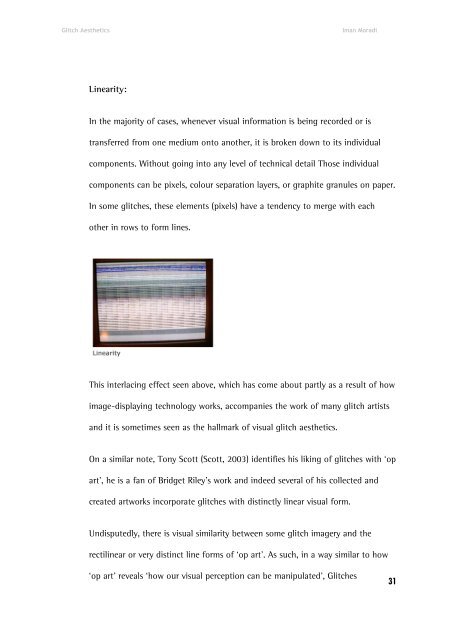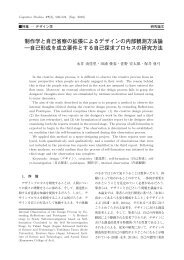Iman Moradi – Glitch Aesthetics
Iman Moradi – Glitch Aesthetics
Iman Moradi – Glitch Aesthetics
You also want an ePaper? Increase the reach of your titles
YUMPU automatically turns print PDFs into web optimized ePapers that Google loves.
<strong>Glitch</strong> <strong>Aesthetics</strong><br />
<strong>Iman</strong> <strong>Moradi</strong><br />
Linearity:<br />
In the majority of cases, whenever visual information is being recorded or is<br />
transferred from one medium onto another, it is broken down to its individual<br />
components. Without going into any level of technical detail Those individual<br />
components can be pixels, colour separation layers, or graphite granules on paper.<br />
In some glitches, these elements (pixels) have a tendency to merge with each<br />
other in rows to form lines.<br />
This interlacing effect seen above, which has come about partly as a result of how<br />
image-displaying technology works, accompanies the work of many glitch artists<br />
and it is sometimes seen as the hallmark of visual glitch aesthetics.<br />
On a similar note, Tony Scott (Scott, 2003) identifies his liking of glitches with ‘op<br />
art’, he is a fan of Bridget Riley’s work and indeed several of his collected and<br />
created artworks incorporate glitches with distinctly linear visual form.<br />
Undisputedly, there is visual similarity between some glitch imagery and the<br />
rectilinear or very distinct line forms of ‘op art’. As such, in a way similar to how<br />
‘op art’ reveals ‘how our visual perception can be manipulated’, <strong>Glitch</strong>es<br />
31





